Country Data by Health Area
Each of the health areas below show uptake data from over 30 countries on 25 high impact health behaviors. If your program is working with any of these behaviors, these data will help you better understand your immediate situation as it relates to those behaviors.
[All data has been pulled from the Demographic Health Survey (DHS) and is updated on a regular basis.]
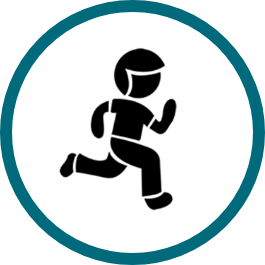 Child Health and Immunization
Child Health and Immunization
Care for Pneumonia ACCELERATOR BEHAVIOR: Caregivers seek prompt and appropriate care for children with signs and symptoms of acute respiratory infection (ARI)
Percentage of children born in the last 5 years who had symptoms of ARI and for whom treatment was sought from a health facility or provider
Management of Diarrhea ACCELERATOR BEHAVIOR: Caregivers provide appropriate treatment for children with diarrhea at onset of symptoms
Percentage of children born in the last 5 years with diarrhea in the last 2 weeks who received ORS
Full Course of Immunizations ACCELERATOR BEHAVIOR: Caregivers seek a full course of timely vaccinations for infants and children under 2 years
Percentage of children 12-23 months who had received all 8 basic vaccinations
 HIV
HIV
Condom Use: Women PRIORITY BEHAVIOR: Women and men with multiple partners use a condom during high risk sex
Percentage of women aged 15-49 who had more than one partner in the past 12 months reporting the use of a condom during their last sexual intercourse.
Condom Use: Men PRIORITY BEHAVIOR: Women and men with multiple partners use a condom during high risk sex
Percentage of men aged 15-49 who had more than one partner in the past 12 months reporting the use of a condom during their last sexual intercourse.
Male Condom Use during Paid Sex PRIORITY BEHAVIOR:Men use a condom during paid sexual intercourse
Percentage of men reporting condom use the last time they had paid sex, of those who report having had paid for sex in the 12 months preceding the survey
HIV Testing: Women PRIORITY BEHAVIOR: Women and men test for HIV and obtain test results
Percentage of women who have ever had an HIV test and received their results
HIV Testing: Men PRIORITY BEHAVIOR: Women and men test for HIV and obtain test results
Percentage of men who have ever had an HIV test and received their results
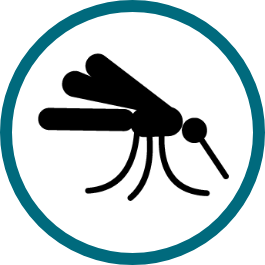 Malaria
Malaria
Insecticide-Treated Net Use: Pregnant Women ACCELERATOR BEHAVIOR: Pregnant women and children sleep under an insecticide-treated net (ITN)
Pregnant women sleep under an ITN
Insecticide-Treated Net Use: Children Under Five ACCELERATOR BEHAVIOR: Pregnant women and children sleep under an insecticide-treated net (ITN)
Children under five sleep under an ITN
Intermittent Preventive Treatment of Malaria in Pregnancy ACCELERATOR BEHAVIOR: Pregnant women take intermittent preventive treatment of malaria (IPTp) at each antenatal care (ANC) visit
Percentage of pregnant women who took two or more doses of SP/Fansidar
Intermittent Preventive Treatment of Malaria in Pregnancy ACCELERATOR BEHAVIOR: Pregnant women take intermittent preventive treatment of malaria (IPTp) at each antenatal care (ANC) visit
Percentage of pregnant women who took three or more doses of SP/Fansidar
Care for Malaria ACCELERATOR BEHAVIOR: Caregivers seek prompt and appropriate care for symptoms of malaria
Percentage of children under age five with fever for whom advice or treatment was sought
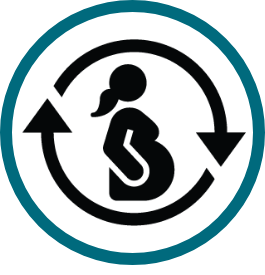 Maternal Health
Maternal Health
Antenatal Care ACCELERATOR BEHAVIOR: Pregnant women attend a complete course of antenatal care (ANC)
Percentage of women who had a live birth in the last three years who had 4+ antenatal care visits
Delivery in Health Facility ACCELERATOR BEHAVIOR: Pregnant women attend a health facility for delivery
Percentage of live births in the last three years delivered at a health facility
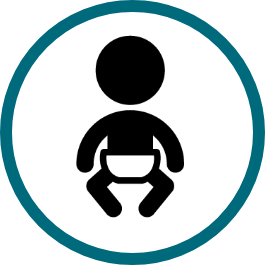 Newborn Health
Newborn Health
Essential Newborn Care ACCELERATOR BEHAVIOR: Caregivers provide essential newborn care immediately after birth
Percentage of infants who started breastfeeding within 1 hour of birth
Essential Newborn Care ACCELERATOR BEHAVIOR: Caregivers provide essential newborn care immediately after birth
Percentage of live births in the three years preceding the survey delivered at a health facility. The proxy indicator is based on the assumption that newborns are more likely to receive the elements of essential newborn care if they are born in a health facility.
Care for Newborn Illness ACCELERATOR BEHAVIOR: Caregivers seek prompt and appropriate care for signs and symptoms of newborn illness
Proxy - Percentage of last births in the two years preceding the survey who had their first postnatal checkup in the first two days after birth.
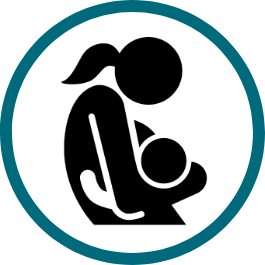 Nutrition
Nutrition
Early Initiation of Breastfeeding ACCELERATOR BEHAVIOR: Mothers initiate breastfeeding within one hour after delivery
Percentage of infants who started breastfeeding within 1 hour of birth
Exclusive Breastfeeding ACCELERATOR BEHAVIOR: Mothers breastfeed exclusively for six months after birth
Percentage of infants under six months who are exclusively breastfed
Complementary Feeding ACCELERATOR BEHAVIOR: Caregivers feed adequate amounts of nutritious, age-appropriate foods to children from 6 to 24 months of age, while continuing to breastfeed
Percentage of children age 6-23 months fed in accordance with all three IYCF Practices
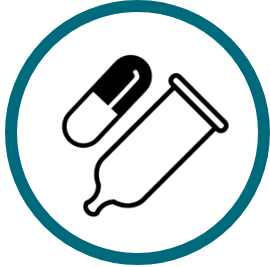 Reproductive Health
Reproductive Health
Adolescent First Birth ACCELERATOR BEHAVIOR: Sexually active adolescents use a modern contraceptive method to delay first birth until after age 18
Percentage of sexually active unmarried women age 15-19 currently using any modern method of contraception
Birth Spacing ACCELERATOR BEHAVIOR: After a live birth, women or their partners use a modern contraceptive method to avoid pregnancy for at least 24 months
Percentage of all women age 15-49 with met need for family planning for spacing
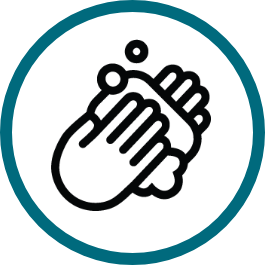 Water, Sanitation and Hygiene
Water, Sanitation and Hygiene
Handwashing with Soap ACCELERATOR BEHAVIOR: Family members wash hands with soap at 4 critical times [after defecation, after changing diapers, before food preparation and before eating]
Percentage of households where place for hand washing was observed with soap and water
Safe Disposal of Human Feces ACCELERATOR BEHAVIOR: Family members safely dispose of human feces
Percentage of population with improved, non-shared toilet facilities
Safe Drinking Water ACCELERATOR BEHAVIOR: Family members drink safe water
Percentage of population with access to improved drinking water sources


 Afghanistan
Afghanistan Angola
Angola Bangladesh
Bangladesh Benin
Benin Burkina Faso
Burkina Faso Burma
Burma Burundi
Burundi Cambodia (Mekong)
Cambodia (Mekong) Cameroon
Cameroon Côte d'Ivoire
Côte d'Ivoire  Democratic Republic of the Congo
Democratic Republic of the Congo Ethiopia
Ethiopia

 Haiti
Haiti









 Nigeria
Nigeria







 Zambia
Zambia Zimbabwe
Zimbabwe The Manoff Group was acquired by JSI in 2022.
The Manoff Group was acquired by JSI in 2022.